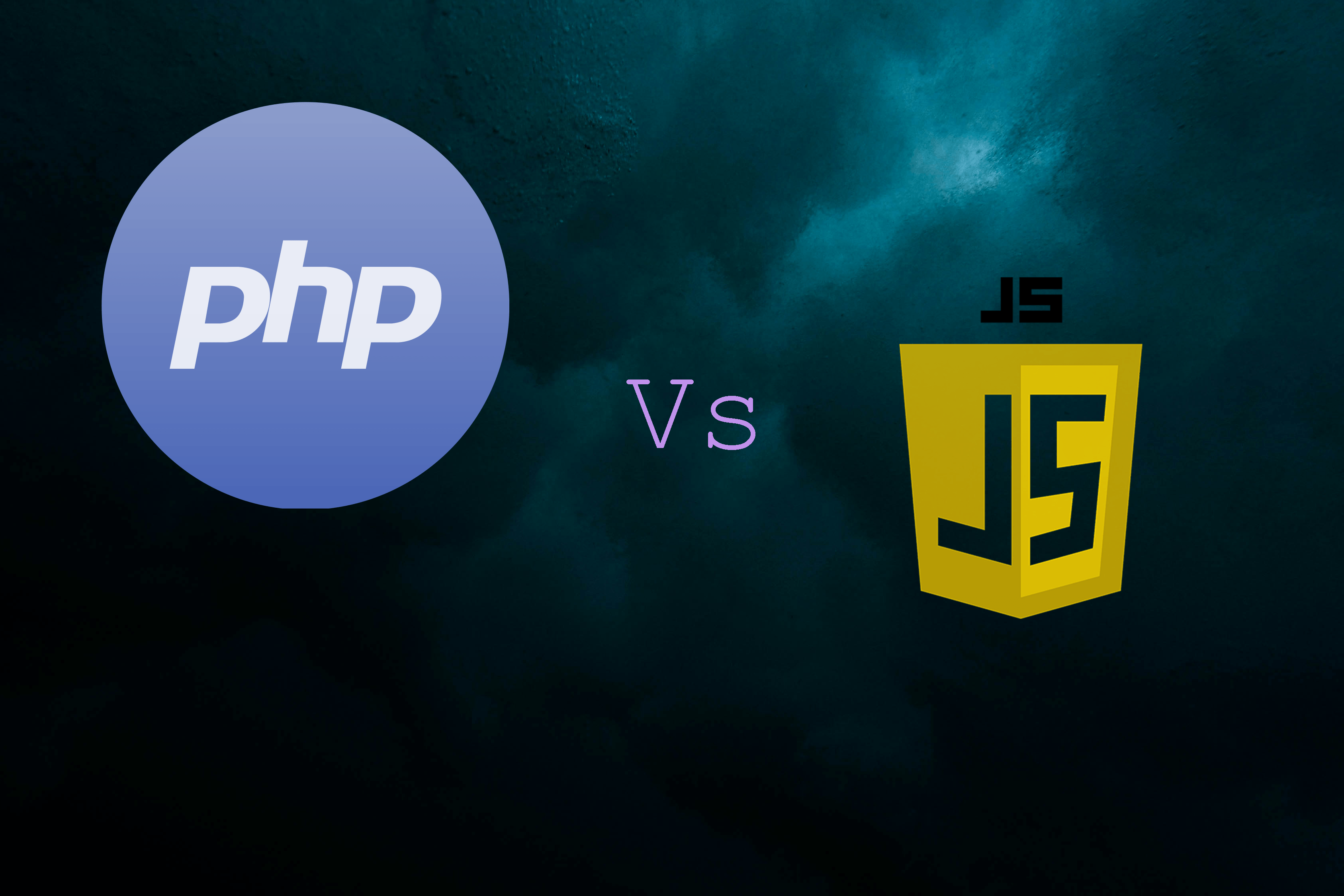PHP vs JavaScript: Choosing Your Web Development Weapon
Embarking on web development sparks the question: PHP vs JavaScript—when to use each? Like choosing tools for tasks, these languages have unique strengths. In this guide, we unravel the mystery of when to opt for PHP and when to let JavaScript lead. No jargon, just straightforward language—let’s simplify this PHP vs JavaScript decision-making journey!

1. Unveiling the Basics: PHP and JavaScript Simplified
PHP (Hypertext Preprocessor): PHP is a server-side scripting language designed for web development. Its primary purpose is to process data on the server before sending it to the browser. When you want to interact with databases, handle forms, or perform tasks that involve server-side processing, PHP steps in. It’s like the backstage worker making sure everything is ready for the big show—your website.
JavaScript: JavaScript, on the other hand, is a client-side scripting language. It operates directly in the user’s browser, enhancing the interactivity and dynamic features of a website. When you want real-time updates, dynamic content, or interactive elements without reloading the page, JavaScript is your go-to. It’s like the performer on stage, engaging directly with the audience—your website visitors.
What we have understood from above it that PHP works behind the scenes, handling server tasks, while JavaScript takes the spotlight, creating a lively and responsive user experience. Together, they form a dynamic duo in web development.
2. Use Cases for PHP
Welcome to the world of PHP! It’s a tool that makes websites do cool things. In this paragraph, we’ll see how PHP is like a web superhero, helping with stuff like dynamic pages, forms, and managing content. We’ll keep it simple, using everyday examples to show why PHP is so handy for making websites awesome. Let’s dive in and discover how PHP works its magic in the web development world!
| Use Case | Example | Explanation |
|---|---|---|
| Dynamic Web Pages | When you log in to a social media platform and see personalized content. | PHP is used to create dynamic web pages that adapt and change based on user interactions, providing a personalized and engaging user experience. |
| Form Handling | Submitting an online form (e.g., registration or contact form). | PHP excels in processing form data, ensuring input validation and handling, facilitating a smooth and secure user interaction with web forms. |
| Content Management Systems (CMS) | Platforms like WordPress relying on PHP for content management. | PHP is a foundational component in CMS platforms, powering functionalities such as content creation, user authentication, and dynamic page generation for websites. |
| E-commerce Websites | Transaction processing and management on platforms like Shopify. | PHP plays a crucial role in e-commerce by processing transactions, managing user accounts, and dynamically updating product listings, ensuring a seamless online shopping experience. |
| Server-Side Scripting | Performing tasks like data processing and file manipulation. | PHP is widely used for server-side scripting, enabling businesses to perform various tasks on the server, enhancing the functionality of applications across different domains. |
| Integration with Databases | Retrieving, storing, and manipulating data in databases like MySQL. | PHP seamlessly integrates with databases, enabling efficient data handling for applications such as CRM systems and inventory management tools. |
These examples showcase the diverse and essential roles PHP plays in web development, from creating interactive pages to powering e-commerce transactions and managing content.
3. Use Cases for Javascript
Welcome to the world of JavaScript, where simplicity meets versatility in web development. In this paragraph, we’ll explore how JavaScript, the superhero of client-side scripting, transforms static web pages into dynamic and interactive experiences. From validating forms on the spot to creating animations and seamlessly updating content, JavaScript is the go-to tool for making your website come alive. Let’s dive in and uncover the magic that JavaScript brings to the table, making your web adventures truly captivating!
| Use Case | Example | Explanation |
|---|---|---|
| Interactive Web Pages | Scrolling through a webpage with dynamic content updates. | JavaScript brings web pages to life, enabling real-time interactions, dynamic content updates, and a more engaging user experience. |
| Form Validation and Enhancement | Checking if an email address is correctly entered in a form. | JavaScript validates user inputs on the client side, providing instant feedback and improving the overall form-filling experience. |
| Client-Side Web Development (SPA) | Building a Single-Page Application (SPA) with dynamic content. | JavaScript is a key player in client-side development, allowing the creation of dynamic and responsive applications directly in the user’s browser. |
| Browser API Interaction | Utilizing the Geolocation API for location-based services. | JavaScript interacts with various browser APIs, enhancing functionalities like geolocation, notifications, and local storage to augment the browser’s capabilities. |
| Asynchronous Operations (AJAX) | Loading new data onto a page without refreshing (e.g., social media feeds). | JavaScript facilitates asynchronous requests, enabling web pages to fetch and display data without interrupting user interaction, resulting in smoother and faster experiences. |
| Web Animation and Effects | Creating animated banners or interactive elements on a website. | JavaScript empowers developers to add animations and effects to web pages, enhancing visual appeal and engaging users with interactive elements. |
These examples highlight JavaScript’s diverse capabilities in enhancing web development, from creating interactive pages to seamlessly validating forms and interacting with browser APIs.
4. PHP vs JavaScript: A Side-by-Side Comparison
When it comes to web development, PHP and JavaScript play crucial roles, but they operate in different realms. Let’s break down the key aspects of these languages for a clearer understanding:
| Aspect | PHP | JavaScript |
|---|---|---|
| Purpose | Primarily server-side scripting, processing data on the server. | Mainly client-side scripting, executing directly in the user’s browser. |
| Use Cases | Server-side tasks like form handling, server scripting, and databases. | Dynamic web pages, client-side operations, enhancing user interfaces. |
| Syntax | Resembles C and Java syntax, focusing on server-side scripting constructs. | Similarities with Java and C++, tailored for client-side scripting. |
| Integration | Typically integrated with databases and server-side operations. | Integrated directly into HTML, widely used for manipulating the DOM and enhancing UI. |
| Execution | Executes on the server, generating HTML content sent to the browser. | Executes in the user’s browser, enhancing browser capabilities and enabling interactions. |
| Applications | Commonly used in CMS, e-commerce platforms, and server-side scripting. | Essential for dynamic web pages, building SPAs, and enhancing user interfaces. |
| Learning Curve | Generally considered easier for beginners due to procedural nature. | Can have a steeper learning curve, especially with more complex concepts. |
Understanding these distinctions helps in making informed choices based on project requirements, with PHP excelling in server-side tasks and JavaScript dominating the client-side landscape. Each has its strengths, making them valuable assets in the diverse field of web development.
5. Choosing Between PHP and JavaScript in Web Development
Navigating the landscape of web development involves critical decisions, and choosing between PHP and JavaScript is a pivotal one. To make an informed choice, consider various factors that align with your project’s objectives, team proficiency, and long-term goals. In this exploration, we delve into key considerations, beyond the basics of server-side and client-side distinctions, offering insights into project complexity, performance nuances, integration capabilities, prototyping efficiency, and alignment with industry standards. Let’s unravel the nuances that will guide you toward selecting the language that perfectly fits your unique development requirements.
| Factor | PHP | JavaScript |
|---|---|---|
| Project Complexity | Well-suited for server-side processing and managing complex server-side tasks. | Excels in handling client-side interactivity and is particularly strong in creating dynamic user interfaces. For complex front-end requirements, JavaScript frameworks like React or Vue.js may provide streamlined solutions. |
| Performance Requirements | Generally performs well in server-side tasks. For highly performance-critical tasks, especially in real-time applications, JavaScript’s client-side execution may offer faster response times. | Thrives in client-side scenarios, enabling seamless user interactions. JavaScript’s asynchronous nature contributes to responsive and performant web applications. |
| Integration with Modern Technologies | Integrates well with traditional server-side technologies and databases. | Particularly strong in modern web development, JavaScript seamlessly integrates with various front-end frameworks and is a go-to language for building cutting-edge, interactive applications. |
| Rapid Prototyping | May require more setup and server-side considerations, potentially slower for rapid prototyping, especially for front-end-centric projects. | Facilitates quick prototyping and development, especially for front-end tasks. With lightweight frameworks and tools, JavaScript allows for agile development and swift iteration. |
| Industry Standards and Trends | Well-established in the web development landscape, especially for server-side applications. If your project aligns with PHP’s historical strengths and industry standards, it can ensure stability and compatibility. | Dominates the front-end and has expanded into the full-stack realm. It aligns with current industry trends, making it a solid choice for projects prioritizing modern development practices. |
Ultimately, the choice between PHP and JavaScript should align with your project’s specific needs, team expertise, and long-term goals. Evaluating these factors collectively will guide you towards the language that best fits your development requirements.
6. Wrapping Up
Embarking on a web development journey? Dive into our article on choosing between PHP and JavaScript! Discover the superhero strengths of each language – PHP’s server-side might and JavaScript’s interactive wizardry. We’ve got the roadmap, breaking down key factors like project complexity, speed, and industry trends. Whether you’re into robust servers or dynamic user experiences, this guide unveils the secrets to pick your coding sidekick! Let’s make your web adventure extraordinary!



